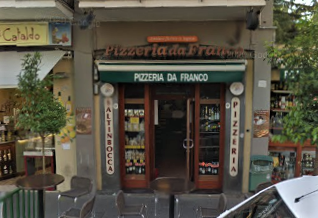Sample a Sorrentine pizza with a crispy base
To enjoy the authentic Neapolitan pizzeria experience while staying in Sorrento, look no further than Da Franco, which is handily located right in the centre of the resort in Corso Italia.
 |
| Pizzeria da Franco, at Corso Italia 265, is just around the corner from the Circumvesuviana station and stays open late (Picture: instantstreetview.com) |
Italian dishes often have regional variations and the Sorrento pizza is said to have a slightly crispier base than the Naples pizza. You will see many local Sorrento people enjoying the food in the pizzeria, or queuing for take-aways, which is always an encouraging sign.
Da Franco also has long opening hours, serving pizza all day and remaining open till two am.
This is helpful for travellers arriving in Sorrento in the middle of the afternoon after some restaurants have closed after lunch, or very late in the evening when you might struggle to get a meal in a restaurant.
You could, of course, take the Circumvesuviana and travel all the way to Naples to visit Pizzeria Brandi, where it is said Pizza Margherita was invented, to experience the atmosphere of a traditional pizzeria.
But for Sorrento holidaymakers, Pizzeria da Franco offers an excellent alternative.
It is on the right hand side of the Corso as you head towards Sant’Agnello, at number 265, just after the turning that takes you to the Circumvesuviana railway station.
Home


